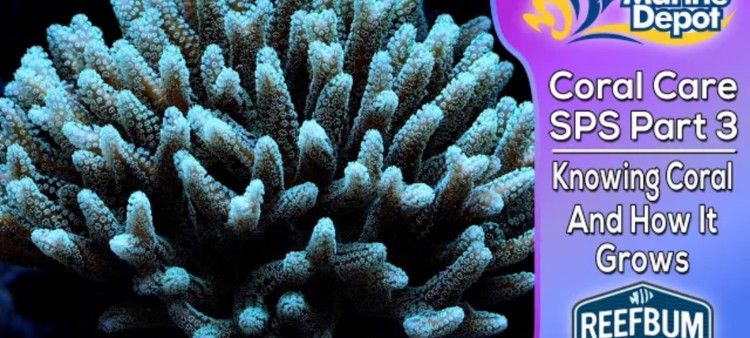Knowing your Coral and How They'll Grow: SPS Care Guide
- Feb 27, 2022
- Anshika Mishra
- 245 0 0

This article talks about SPS corals and some tips for choosing and placing these spectacular corals.
One key to keeping an eye-catching SPS-dominated reef is to plan ahead of time and think about what the reef might look like in a year or two when it matures. Do your homework and know all you can about the corals you add to your reef.
Every reef keeper starts with a blank canvas and has the opportunity to create their masterpiece. But certain best practices and tips on choosing and placing SPS can be followed to achieve success.
Anticipating the Growth
Understanding and anticipating growth rates and patterns is critical. For example, the Acropora green valley slimmer grows fast and overtakes the entire tank.
If you put a mini colony of Slimer in the bottom of the tank, it can grow right to the top of the tank. The same is true with Bird's nest corals, and they can grow like weeds and take on other corals inhibiting their growth.
Given the accelerated growth, these colonies start to die off at the base since that part of the coral will likely not receive sufficient light and flow. One option in this instance is to replace the entire colony with large and frag from the top of the settlement.
A coral can also start to show signs of rapid tissue necrosis (RTN) on the main part of the coral if it grows too large. Again lack of flow and light can trigger this type of event.
Caps are beautiful scrolling corals, but they are also aggressive and can easily cover other corals beneath. Place these corals lower down and give them a wide berth if you want them in your tank.
Another consideration in planning the layout of an SPS tank is starting with frogs or larger pieces. Some people like the instant gratification of adding bigger pieces, while others prefer to start with small frags and see them grow into colonies.
We advise you to be patient and start with frags since they can evolve and grow more organically, with the reef providing a more natural look. It will take a year or two for these colonies to grow, but it will be well worth the wait.
Placement, Lighting, and Other Factors in Consideration
No matter which way you do, it might seem okay to place a couple of slow-growing corals next to one another. But, the tight placement will limit flow, and their health might be impacted.
You also want to avoid stressing out a newly placed coral by purring or moving it. It is also important to bone up on the lighting and circulation demands of the corals that you are considering.
The hardiness of the coral is another factor to consider. More demanding corals should only be added after the less demanding corals have established themselves in a new tank.
Choosing a Fish
Finally, be careful with the fish you add, and make sure they don't have a reputation as coral nippers. Certain angelfish are okay in an SPS-dominated reef, while others are definite no-nos.
It can be a major undertaking to remove a fish from a mature reef. So please do your homework on their habits and tendencies.
Conclusion
A reef is a growing and evolving ecosystem with many interdependent pieces. So, make sure you consider this when building your masterpiece.






About author